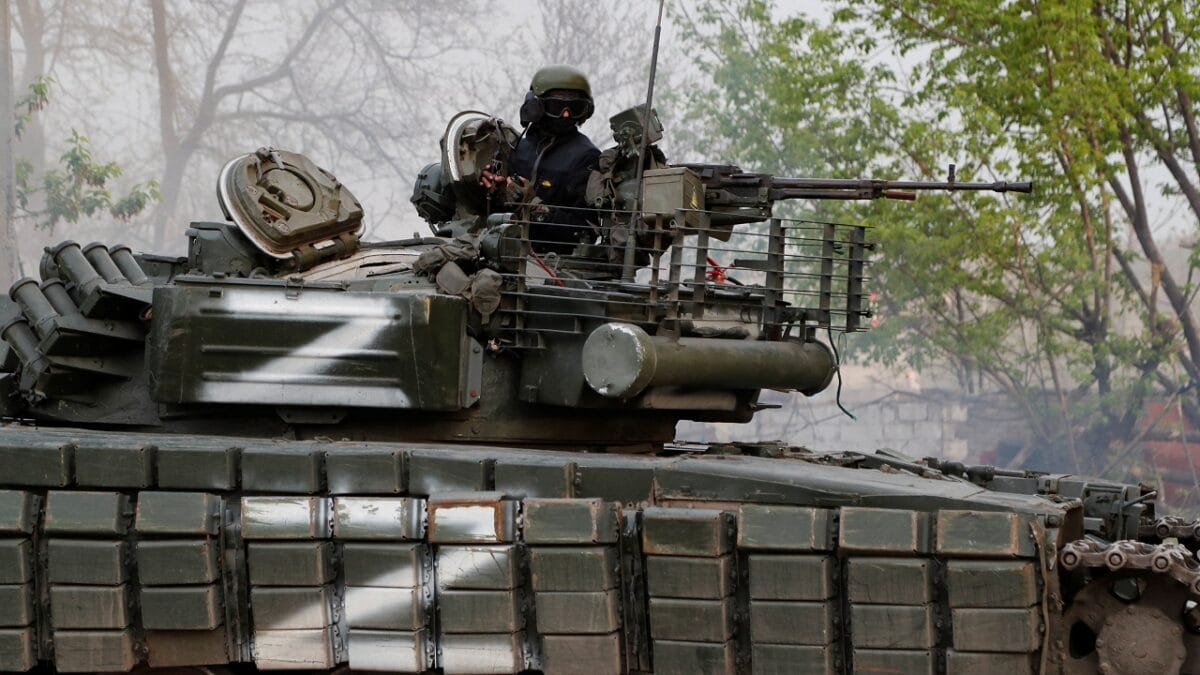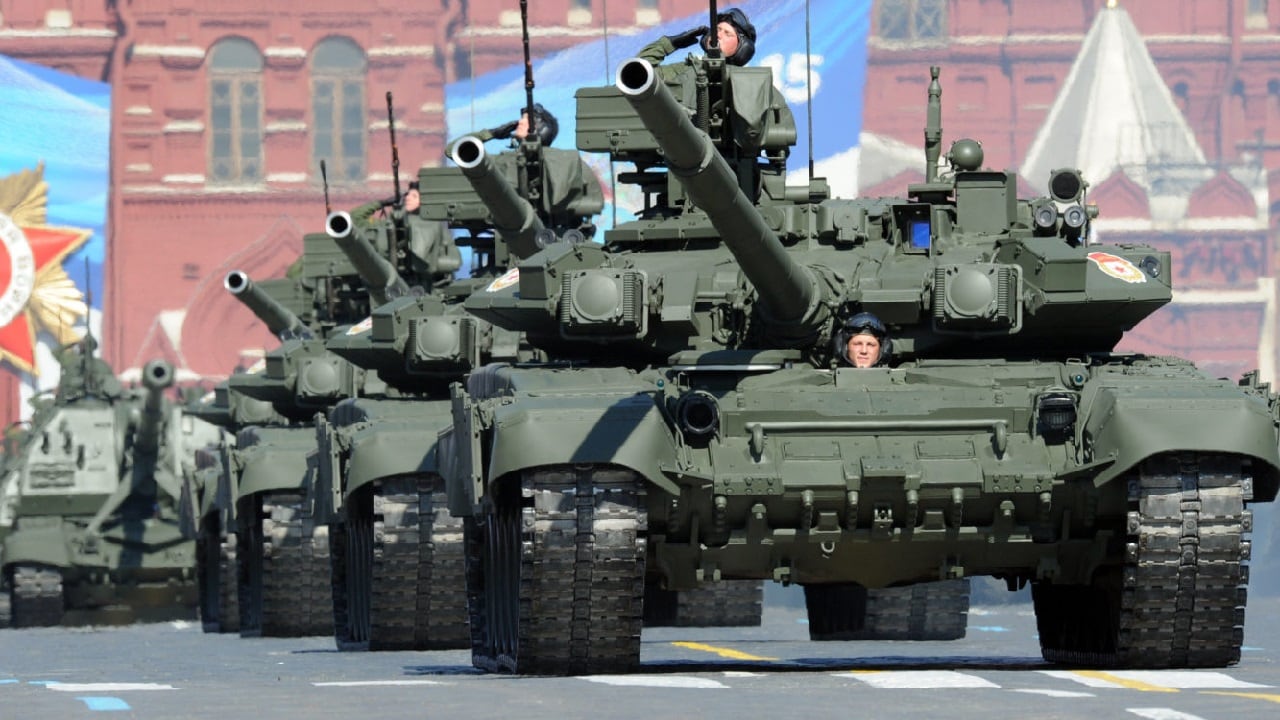Russia keeps losing tanks thanks to Ukraine’s tractors? Since launching its unprovoked and unwarranted invasion of Ukraine in February, Russia has devastated its neighbor’s countryside, leveled cities, and killed untold thousands. The war has also impacted Ukraine’s farm-based economy.
As The Washington Post reported earlier this month, the destruction of Ukrainian farmland, machinery, and infrastructure isn’t merely collateral damage, it is actually a core part of Russia’s military strategy. Though it looks like Ukraine can continue to hold out – and potentially even drive out the invader, the nation will be scarred for years, perhaps decades to come.
However, what the Kremlin may have failed to foresee was that Ukraine’s farmers would sit idly by as the Russian tanks rolled in. Though many of the farmers have taken up arms, others have simply used what is at their disposal – namely, their tractors.
Mocking Putin
It was just days after the invasion had begun that the first reports of Ukrainian farmers and workers using their tractors to haul away Russian tanks. Some of those armored vehicles were damaged, others were abandoned, and a few were apparently even towed away while the crews were out answering nature’s calls or just getting supplies.
The humble tractor has become one of the de facto symbols of Ukraine’s resistance to Russia’s invasion. Videos have circulated on YouTube while photos and memes have gone viral across various social media platforms, including Twitter, Telegram, and TikTok. A cottage industry has also sprung up, producing posters and T-shirts featuring the images, which serve mock the Russian Army and, of course, Russian Federation President Vladimir Putin.
How Did it Start?
The first video of a farmer stealing one of the Russian Army’s armored personnel carrier (APC) was posted to YouTube on February 28, a mere four days after the invasion began. That video, which has been widely shared across other social platforms, has been seen millions of times.
Whether that initial act inspired others remains unclear, but in the days and weeks that followed, other farmers were using their tractors to haul away Russian vehicles including actual tanks.
“A simple Ukrainian tractor driver took a tank from Russian soldiers,” posted Ukrainian journalist Iryna Serohova (@Seregovalrina) in March.
a simple Ukrainian tractor driver took a tank from Russian soldiers #StopPutin #StandWithUkraine #StopRussianAggression #ukraine #NoFlyZone pic.twitter.com/HOU2sfd4UF
— Iryna Serohova (@SeregovaIrina) March 8, 2022
Other users on social media suggested the “1st Tractor Armor Division” was working overtime, and from there it has led to memes that were even doctored to show a Ukrainian farmer hauling away the cursed Russian Navy aircraft carrier Admiral Kuznetsov. It wasn’t real, of course, but it was one of the dozens of doctored images that showed Ukrainians towing away rockets, jets, and even a submarine.
Though the memes and jokes also serve as a propaganda tool, it is the actual actions of the farmers that are truly becoming a symbol of the Ukrainian resolve.
As Vice News reported in the early stages of the conflict, those images are especially powerful as they bolster the twin narratives of the war: “Russia’s military hardware was not prepared for this war and everyone in Ukraine is ready to fight back against Russia, including farmers.”
The situation hasn’t improved for Putin’s forces in recent months.
Take the Tanks: A Symbol of Resistance
The tractor remains a symbol of defiance – one the Kremlin has past experience with. In fact, Ukrainians’ affinity for tractors dates back to 1930 in the vibrant city of Kharkiv, then the capital of the Ukrainian Soviet Socialist Republic. It was there that the Soviets decided to erect one of the country’s largest tractor manufacturing plants, which Joseph Stalin called “a steel bastion of the collectivization of agriculture in the Ukraine.”
For the farmers living in Ukraine, tractors were a game-changer. The machines were seen as the epitome of engineering, replacing wooden horse-drawn plows that rolled over the soil. Their disruptive power was highlighted by Soviet propaganda, including movies about tractors, parades, songs, and celebrations.
“At the most intimate scale, the tractor lifts the former peasant, now collective farm worker, above the ground,” Christina E. Crawford, assistant professor of architecture at Emory University, wrote in her book Spatial Revolution: Architecture and Planning in the Early Soviet Union.
What Crawford also noted is a fact that Vladimir Putin would like to forget – and one that past Soviet leaders certainly didn’t publicize. In the 1920s, Soviet leaders tried unsuccessfully to build tractors themselves, relying on industrial espionage and reverse engineering. That included taking apart an American Fordson tractor in Leningrad (now St. Petersburg), but those efforts largely failed.

A service member of pro-Russian troops is seen atop a tank during fighting in Ukraine-Russia conflict near the Azovstal steel plant in the southern port city of Mariupol, Ukraine May 5, 2022. Picture taken May 5, 2022. REUTERS/Alexander Ermochenko
At one point Soviets tried to strike a deal with Caterpillar to build a plant. In the end, the Soviets modeled the Kharkiv factory on the Stalingrad (now Volgograd) facility that built the International Harvester tractors. However, those plant blueprints were actually created by the American architecture firm Albert Kahn, which designed the Ford River Rouge auto plant in Dearborn, Michigan.
The tractors became an important symbol under Soviet rule, and after the dissolution of the Soviet Union, even as Ukraine struggled to adapt to a free market economy, its tractors remained an important part of the nation’s culture. They weren’t often seen as the best, but they were able to get the job done
Today, those tractors are now a symbol of resistance and resolve.
Expert Biography: A Senior Editor for 1945, Peter Suciu is a Michigan-based writer who has contributed to more than four dozen magazines, newspapers, and websites with over 3,000 published pieces over a twenty-year career in journalism. He regularly writes about military hardware, firearms history, cybersecurity, and international affairs. Peter is also a Contributing Writer for Forbes. You can follow him on Twitter: @PeterSuciu.

